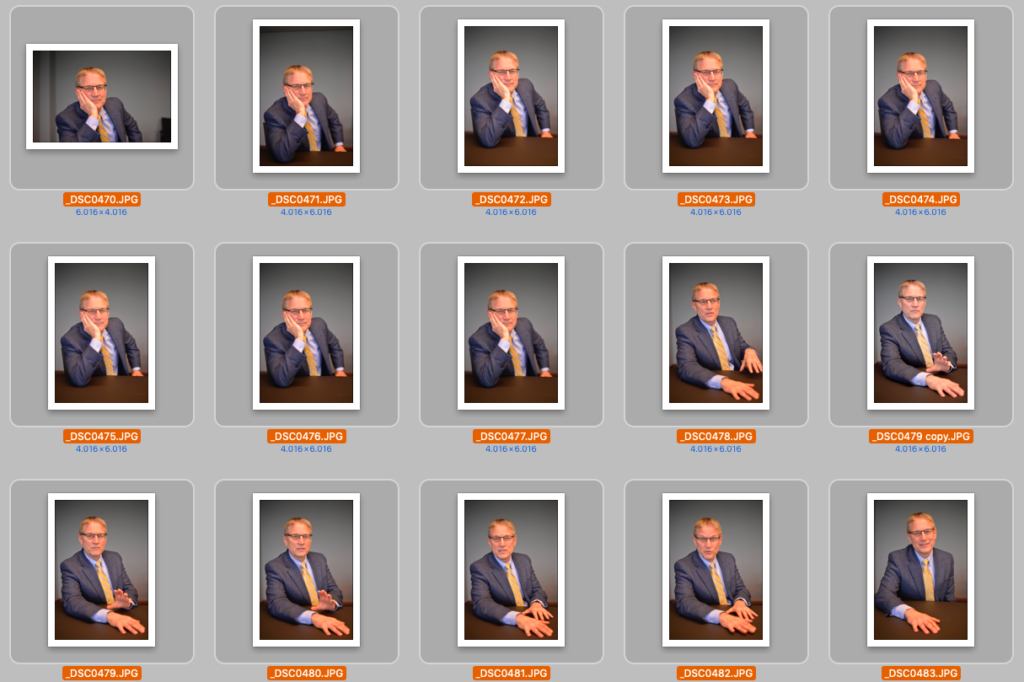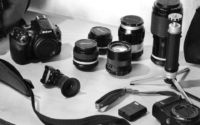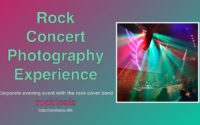Portrait experiences & what works for me
I listened to a recent video from Daniel Norton, dealing with the topic of posing for a portrait. Fashion shoots is not something I do, but I have done corporate and private portraits of family and friends. I have identified the things that work for me and wanted to share them for discussion.
What triggered me to think
My wife and I were invited to a BBQ a few years back. I never leave the house without a camera. More often than not the Nikon with the manual AIS lenses.
I spent nearly the whole time photographing, much to the annoyance of one of their girls. The other twin was happy to be photographed all the time and virtually glued herself to the lens… Their son was too wrapped up in other things to care about me photographing.

Chatting with them all and letting them explain their latest “gadget” eventually relaxed them. This allowed me to get the images I did.
The greatest complement was from their mother after I sent them the images. She had just paid the school photographer for images and she preferred mine as they represented what she saw in her children. And that was my aim.
Posing as opposed to authenticity
Awkward body posture or expression is difficult for people to do naturally unless they have practiced. In my photographic work I do not have the privilege of working with trained and practiced models.
I have to work with expressing the feel of a natural person. Reflecting their character as opposed to styling a look that is irrespective of their personally.
Posture in photography is the difference between a dignified result and a sloppy look. Children and trained models are like ballet dancers, their muscles are like tension springs. In the case of children because they want to move, in the case of models because they want to hold their posture.
I have found the best way to get a subject to stand or sit tall and with a controlled posture is lead by example. I should stand and conduct myself with controlled posture. By building a rapport the subject will naturally echo some of what you are doing.
After all we are trying to reflect in a portrait a representation of a person that is not unnatural.
Transitioning facial expression
Models for fashion seem to me to be just biological coat hangers with eyes. Looking pretty to carry the object. As such I have noticed that their facial expressions are more often than not dead pan.
When photographing normal people however, we notice that their expressions change far more frequently. Obviously relaxing people makes a difference and stops their expressions being negative, stressed or strained; but there is also the issue with transitions.
During the process of changing from one expression to another, the different facial muscles change at a different pace. The result is that catching the face during the “transition” creates an unnatural result.
Professional models appear not to transition much at all, but when they do the time to transition is short. The result appears to be that a professional model provides the photographer with a higher ratio of “expressive” time compared to “transitioning” time. Increasing therefore the time a photographer has to time the look right!
Transition in posture with a professional model is also short.
It helps if you like the person
Authenticity works the other way too. If as a photographer I simulate liking a person or pretend to find them interesting, they will pick up on this.
As with the story of the children, time taken to engage creates a basis of trust and safety. People being photographed need to feel they are not going to be getting a prison mug shot. Who would?
A corporate portrait I needed to do is a good example. The executive needed a shot for a paper they were publishing.

I was photographing a user conference event. Typical workshop, exhibition space, visitors, reception, keynote presentations and so on. In the middle of this the PR manager unexpectedly threw in the need for a corporate portrait.
I had 20-30 minutes of his time, no advanced warning to check the possible locations, no lighting, flash or reflectors to manage the result.
I took some time out from the event photography to look for locations and check lighting. But more importantly I spend nearly half the time taking test shots in the meeting room whilst chatting with him.
I got to like this person, he was very pleasant and had real gravitas. This also gave me the chance to also see how he moved and spoke.
Watch them first
When I cook I check the quality of the ingredients that I have before I begin. Naturally I need to know if something needs to be adjusted or adapted to get the resulting meal.
It really helps to get to know the person or people you are photographing to get a good result.
As in the case of the executive, test shots and a chat are a powerful tool to buy time and establish what works. With the kids it was letting them explain their fidget spinner or mp3 player. Each case is different, but engagement is the window to their person and ultimately to the timing to get their personality on “film”.
Wrap up
In portraiture I have only a little experience, and as such I need to understand what to do. This is simply my approach, yours may differ.
A portrait is personal and anyone in front of your lens, be it children or executives, will want to be represented kindly.
“I always want to photograph a person in the way I think they would like to be seen”
my philosophy with portraits.
You can view Daniel's video here: https://youtu.be/NZfVpIHLH2I


